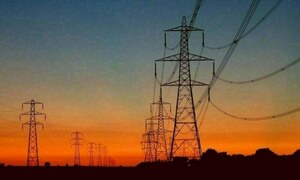According to a Business Recorder exclusive, Prime Minister Shahid Khaqan Abbasi fully cognizant of severe financial constraints facing the country 10 days before the presentation of the budget 2018-19 in parliament as on 17 April, during a Cabinet meeting, he remarked that defence spending and interest payments on domestic and foreign loans eat up the entire tax revenue of the government. The question is if this assessment is accurate and if so how can the government justify its fiscal incentive package of 184.4 billion rupees while enhanced taxes would account for an additional 93.3 billion rupees leaving a net reduction in revenue of 91 billion rupees?
Total revenue collected during the ongoing fiscal year, as per revised estimates, was 4.14 trillion rupees while total mark-up as well as foreign loan repayments amounted to 1.9 trillion rupees; defence expenditure accounted for 1.25 trillion rupees (including military pensions of 253 billion rupees) giving a grand total of 3.15 trillion rupees. Thus interest payment and defence spending together accounted for 76 percent of total tax revenue - a sizeable amount but with a quarter tax revenue remaining for other use.
In the budget 2018-19, the Abbasi-led administration has estimated tax revenue of 4.43 trillion rupees while mark-up on domestic and foreign loans as well as foreign loan repayments is projected at 2.2 trillion rupees while the size of defence allocations (including military pensions) is around 1.3 trillion rupees giving a grand total of 3.5 trillion rupees. Thus in the forthcoming budget these two expenditures account for 79 percent of the projected tax revenue - a rise of 3 percent that can be squarely attributed to the Abbasi-led administration. Additionally, the higher revenue projected is not based on a projection by the FBR which has envisaged a decline in revenue of 91 billion rupees due to the massive fiscal incentives given by the government, but on some vague hope that the Gross Domestic Product growth rate would fuel growth in tax revenues of 13.4 percent.
Had the government bothered to look at Pakistan's historical data, even going back five years, it would have been forced to acknowledge that the impact of GDP growth rate on tax revenue is not established (though such a linkage is evident in developed countries); and the rise in revenue during the tenure of the PML-N government has been due to a rise in taxes mainly on existing taxpayers, an example being levying a withholding on filers, albeit at a lower rate than non-filers, in the sales tax mode which implies the filer not only pays income tax but then pays a withholding tax as and when he procures any item or service on which a withholding tax has been levied. It is relevant to note that withholding taxes account for 75 percent of all FBR taxes parked under income tax collections and that the difference in the rate between filers and non-filers did not lead to any significant rise in the number of filers. Be that as it may, defence and interest payments account for 73 percent of total current expenditure and 66 percent of total expenditure as per the budget documents.
Thus the budget for next fiscal year is dependent on revenue collections that are unlikely to be realized given the tax concessions announced by the present government; the expenditure allocations envisage higher borrowing for which again the present government must be held responsible. The attempt to curtail public sector development programme (PSDP) in 2017-18 to 750 billion rupees (250 billion rupees less than budgeted for the current year) and to contain the PSDP for next fiscal year to 800 billion rupees while urging provinces to generate a surplus of 285.6 billion rupees makes the budget even more controversial and unrealistic as relations between the federal government and its federating units are at an all time low given that (i) three provinces walked out of the National Economic Council meeting due to failure to agree on a range of projects; and (ii) even Punjab is going to announce a four-month budget which makes a mockery of the budget allocation of 850 billion rupee provincial PSDP and the projected provincial surplus for the current year.
To conclude, the next government would need to completely redraft the budget; it would need to bring together all institutions, including the military and the civilian bureaucracy to assist in identifying areas where expenditure can be cut, including in pay raises announced by the current government, while taking fiscal measures that begin to reform the existing tax structure by increasing reliance on direct tax collections and enhancing the tax base.
BR100
11,751
Decreased By
-115 (-0.97%)
BR30
35,467
Decreased By
-230.1 (-0.64%)
KSE100
112,796
Decreased By
-1352.7 (-1.19%)
KSE30
35,510
Decreased By
-442 (-1.23%)

























Comments
Comments are closed.